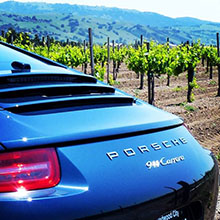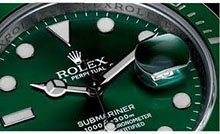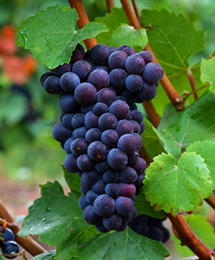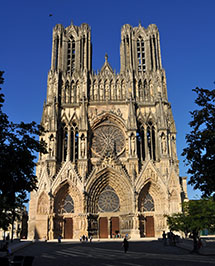|
Early Champagne HistoryThe evolution of champagne took place over centuries and is still evolving today. Grapes were grown in Champagne as early as Roman times. Some believe that wine grapes were already being grown before Julius Caesar arrived in 52 BC, but there is no documented proof. Others insist Pliny mentioned ‘the wines of Aÿ’, in his writings from the 70s AD, but documentation is not retrievable. The first caves were dug by the Romans to mine the chalk for construction purposes prior to proof that wine was being made. The first conclusive evidence of wine from Champagne is during the 5th century AD and most historians agree vines for wine grapes probably appeared near the beginning of the 5th century. Many historical events took place in and around the Champagne region. Attila the Hun was forced to retreat in defeat from his invasion of the area at the Battle of Chalons in the mid 5th century after one of the bloodiest confrontations in history. It is said that in 496, the Frankish King Clovis converted from paganism to Christianity and was baptized in Reims on Christmas day by the Bishop Saint Rémi (some sources indicate the baptism was in the time frame between 496 and 499). Many legends abound regarding the miracles of Champagne’s wine associated with Saint Rémi. One account was that Clovis, after seizing control of Paris, Reims and Chalons-sur-Marne, was preparing to march against the Alaman tribe near the Rhine. Clovis went to the Bishop for spiritual guidance. Saint Rémi blessed a cask of wine and sent it with Clovis with instructions to battle triumphantly for as long as the wine in the cask lasted. The king and his army drank repeatedly from it all through the battle, but it never became empty until their victorious return to Reims, where the cask suddenly went dry. Wine grew to become a symbol of prestige for noblemen and clergy. Monasteries were acquiring their own vineyards and making more and more wine. Vineyard holdings by abbeys increased significantly in the 7th century. Monks of the Catholic Church played a vital role in winemaking from the 6th century until the French Revolution late in the 18th century. The area was noted for quality production to the extent that kings of France were crowned in the Reims Cathedral in Champagne. The first king reported to be officially crowned in the Cathedral of Reims was Louis I, the Pious (Emperor of the Romans, King of the Franks). He was Charlemagne’s son and the coronation took place in the 814/16 time frame during the Carolingian Dynasty. Successors of Louis I did not immediately follow suit, but beginning in the early 11th century, the cathedral became the ‘Coronation Cathedral.’ For nearly 800 years, more than 40 kings and queens of France were crowned there until the beginning of the French Revolution. A fire destroyed the church in 1210 with reconstruction beginning in 1211. The 800th anniversary celebration of the current cathedral took place in 2011. Champagne’s location is ideal for commerce, situated at the crossroads of two major trading routes. In the south are Switzerland and Italy passing through Champagne heading to or from the area of Flanders in the north. In the east there is Germany with roads leading to Paris in the West. Trade fairs were common in the area in the 12th and 13th centuries. Although the location put Champagne on the trading map, it also made it a location often blanketed by war and steeped in history. The battles of the barbarian tribes and the scourge of Attila the Hun raged in the 4th and 5th centuries. The Order of the Knights Templar was officially sanctioned in the city of Troyes, Champagne in the 12 century by the Catholic Council. The land was repeatedly ravaged during the 100 years war (1330s to 1450s). Joan of Arc led Charles VII to Reims and his crowning at the cathedral in 1429. Many other hostilities and wars plagued the area throughout history and into the 20th century. The French Revolution (late 1780s to 1798/99) followed by the Napoleonic Wars (lasting until 1815), then World War I and World War II were some of the conflicts that had a profound influence on the area. It is difficult to imagine how it survived, much less became the iconic symbol of luxury that it is today with all the turmoil it faced. The history of champagne continues with The Dawn of Sparkling Wine - Champagne History Part 2. Related Subjects More about Champagne History
|
|||||||||||||||||||||||||||||||||






